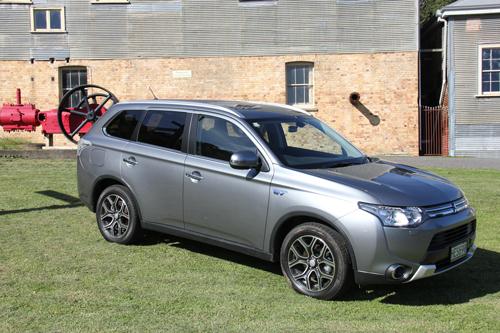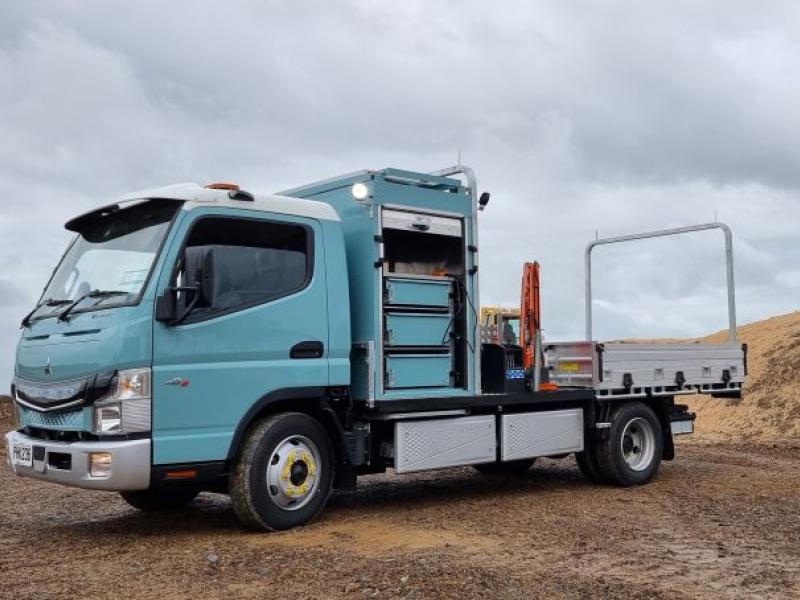We were pretty excited about the Mitsubishi Outlander PHEV at the launch last month – but what’s it like to live with? John Oxley reports.
If I was ready for retirement, with the cash for a new car to last me a l-o-n-g time, I’d go for the Mitsubishi Outlander PHEV.
Here’s why.
First, it’s the right size for everything I want to do, and can tow a boat, and can even launch and retrieve it. That’s important in my retirement plan.
Second, since I intend to get solar power at my retirement home, I’ll be able to recharge the batteries at no cost during the day so I won’t have to dip into my pension to use it for trips into town.
Third, there’s something really special about travelling with no noise from the engine. Your passengers really enjoy being able to chat without raising their voices, and your neighbours quickly appreciate it as you glide down the road making hardly a sound, and with no exhaust fumes to mark your passage.
Hold on a mo’. Most of you will be far from retiring, so what’s the motivation if you’re looking for a fleet vehicle?
Well, most of the dynamic remains. It’s right-sized for the current market, it can be recharged from an ordinary 13A plug socket, and when you use it for longer journeys you can rest secure in the knowledge that you can always refill with petrol to make sure you reach your destination.
As we’ve said before, the PHEV – that stands for “plug-in hybrid electric vehicle” – uses electric power combined with a “range extender” petrol engine to get about.
That means most of the time it’s the electric motors that are driving the vehicle, with top-up power coming from the petrol motor, and from the kinetic energy saved and diverted to the batteries under braking etc.
We recharged the batteries a couple of times during our tenure with the vehicle, plugging-in in the garage, and leaving it overnight. The first time we just plugged in and left it; the second time we used the in-built timer system to set start and finish times.
Both times we were shown a range of 45km on electric power alone when we’d finished; the dashboard indicator also tells you how far you’re going to get on petrol.
As far as cost is concerned, it’s hard to work it out without a bill. And even though we’ve got a smart meter, the online “instant” readout at our power supplier website never seems to work.
However, we can do a rough estimate on what it costs (and please bear in mind I’m a journo, not an accountant, so I’ll go through the steps so you can do your own sums. Hopefully we’ll agree).
It takes six hours to fully charge the PHEV batteries from empty. According to Mitsubishi, the PHEV draws 10 amps while charging – which equates to 2,400W – which, incidentally, is about what your average domestic heat pump is drawing on a cold day. Multiply that by six, and you get 14,400W/hours, or 14.4kWh.
I pay 29.6c/kWh for power, so quick calculation, and that means I’m paying $4.26c per top-up for a range of about 45km. That’s about 10.56c/km.
Compare that to 16.15c/km for the petrol-powered Outlander, on the official figure of 7.5L/100km.
Of course, all of the above is based on a whole lot of assumptions which might not apply in a company equation.
Mitsubishi claims as little as 1.9L/100km in some situations, but that’s starting with a full battery pack, and over a specified distance. The longer your journey, the more it’s going to cost in petrol once electric power is depleted. We saw as much as 7L/100km on the computer after a long journey.
But there’s a lot more to the PHEV than just its motive power. In top-line VRX trim as tested here, it’s a remarkably comfortable vehicle, which comes with all the bells and whistles, including satnav, leather trim, power tailgate, reversing camera, and radar safety/cruise technology.
Driving the PHEV is easy. You just select which way you want to go. “R” to get out of the garage, and press the accelerator. “D” to go on your way. There are no gears, just a slight whine and you’re off. Quickly, since electric motors develop maximum torque from standstill.
On the road, the vehicle is quick and easy to drive, with lots of power for overtaking, while ride and handling are excellent, with the slightly greater weight of the PHEV over other Outlanders making it feel more “planted”.
And quiet. Really, really quiet…






